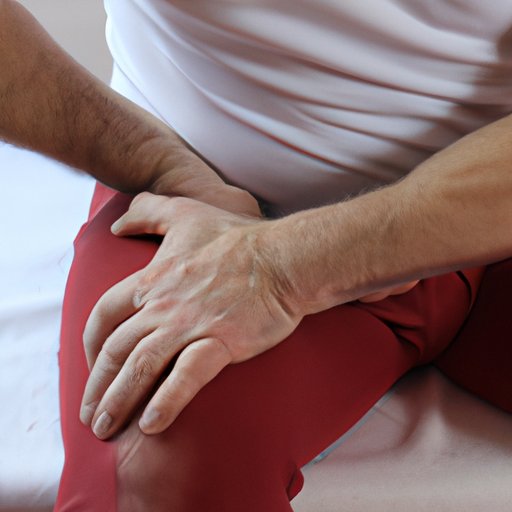
I. Introduction
If you’re into sports or any physical activity, you might have experienced a pulled muscle. A pulled muscle can range from mild discomfort to severe pain, and it can affect all parts of the body. It’s essential to identify if you’ve pulled a muscle to take the necessary precautions and avoid further damage. In this article, we’ll discuss how to know if you pulled a muscle, its causes, home remedies, when to seek medical help, prevention methods, and rehabilitation.
II. Identifying Symptoms
A pulled muscle can cause different symptoms, such as stiffness, soreness, swelling, bruising, and limited mobility. You might feel pain while engaging in physical activity or days after the activity. Some common areas where pulled muscles occur are the back, neck, shoulders, thighs, and calves. You can also experience muscle spasm or cramping.
III. Causes
A pulled muscle can occur due to various reasons such as inadequate warm-up, overusing muscles, and insufficient stretching. It can also happen when engaging in unfamiliar activities, performing sudden movements, or when your muscles are fatigued. Some common situations where pulled muscles occur include lifting heavy objects, participating in sports without proper preparations, and not resting enough between workouts.
IV. Home Remedies
If you think you’ve pulled a muscle, there are some home remedies you can use to alleviate pain and promote healing. One of the most effective remedies is RICE – rest, ice, compression, and elevation. Resting the affected area and applying ice for 15-20 minutes can help reduce swelling. Wrapping the affected area with a compression bandage and elevating it can also help reduce swelling. Another remedy is to massage the affected area gently. Using a warm compress can also help relieve soreness and stiffness.
V. When to Seek Medical Help
While home remedies can ease the symptoms of a pulled muscle, some cases require medical attention. You should consult a doctor if the pain is severe and prevents you from engaging in daily activities, if you experience numbness or tingling, or if the affected area is visibly deformed. You should also seek medical help if you’re unable to bear weight on the affected area.
VI. Prevention
The best way to deal with a pulled muscle is to prevent it from happening in the first place. One way to prevent muscle pulls is to have proper gear and equipment, such as using the right shoes when running or lifting weights. Proper stretching before engaging in physical activity can also prevent muscle pulls. Knowing your limitations and gradually increasing intensity and duration can help prepare your muscles for more strenuous activities.
VII. Rehabilitation
If you’ve pulled a muscle, proper rehabilitation is crucial for a faster and more complete recovery. Rehabilitation techniques such as physical therapy and strengthening exercises can help heal the affected area, prevent future injuries, and improve muscle function. Rehabilitation should be done gradually and with the guidance of a trained professional.
VIII. Conclusion
In conclusion, knowing the symptoms of a pulled muscle, its causes, and preventive measures can help you avoid injury and promote long-term health and fitness. If you think you’ve pulled a muscle, try some home remedies first, but don’t hesitate to seek medical help if necessary. Remember to prioritize your muscle health, and take the necessary precautions to prevent future injuries.




